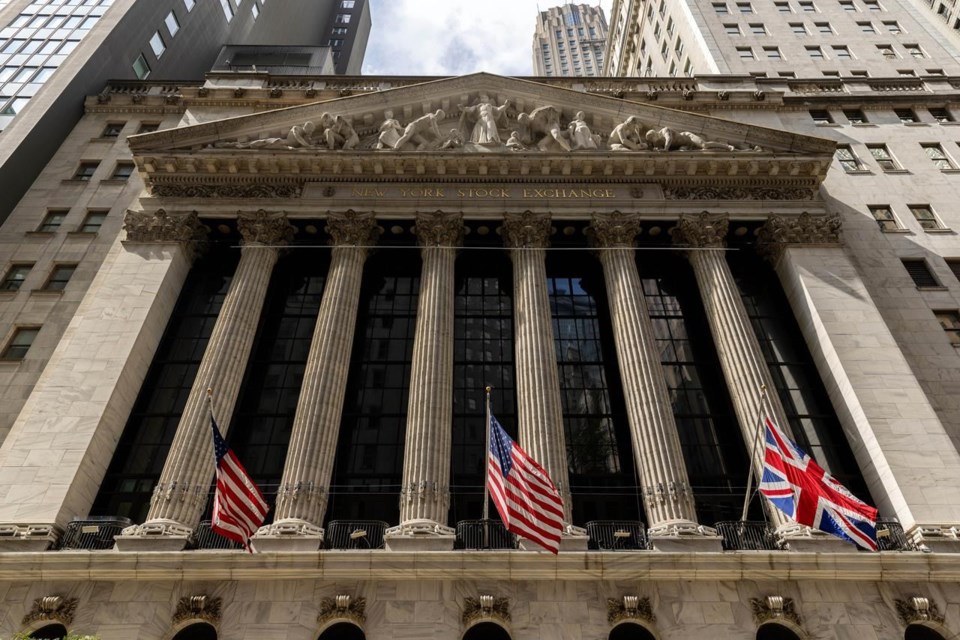NEW YORK (AP) — Wall Street is holding relatively steady after a report showed U.S. inflation is warmer than expected, but maybe not by enough to dash traders’ dreams of lower interest rates later this year. The S&P 500 was up 0.3% early Thursday, briefly touching the record high it reached two years ago. The Dow was flat, and the Nasdaq composite was up 0.4%. Stocks roared higher late last year on expectations that cooling inflation would prompt the Federal Reserve to cut rates sharply. Altogether the report will likely cause traders to push back forecasts for the timing of the first cut to rates, analysts said.
THIS IS A BREAKING NEWS UPDATE. AP’s earlier story follows below.
Markets were slow to gain traction before the open Thursday while waiting for the latest U.S. inflation data.
Futures for the S&P 500 gained 0.2% before the bell, while futures for the Dow Jones Industrial Average were unchanged.
Investors are watching for a due later Thursday that could show whether all the optimism that’s vaulted stocks higher recently is warranted.
Hope is growing that the Federal Reserve has cooled the economy just enough to tame inflation without causing a recession and that the central bank may cut interest rates sharply this year. Economists expect Thursday’s report to show prices paid by U.S. consumers were 3.2% higher in December than a year earlier, according to FactSet.
That would be a slight acceleration from November’s 3.1% inflation rate. But after ignoring the effects of food and fuel prices, which can quickly shift from month to month, economists believe underlying inflation trends likely continued to cool.
The Fed has hinted at possibly cutting interest rates three times this year. Many traders are anticipating double that number of rate cuts, but critics say that’s overly optimistic.
The U.S. government also issues its latest weekly data on jobless claims later Thursday and some major companies report their latest financial results on Friday, kicking off earnings season.
Chesapeake Energy announced it was combining with Southwestern Energy to form the biggest natural gas producer in the U.S. Both stocks retreated slightly in premarket. On Friday, when initial reports of the deal surfaced, Southwestern shares closed more than 7% higher.
In Asian trading, Tokyo's benchmark Nikkei 225 index finished 1.8% higher at 35,049.86. That was the highest finish since February 1990, during Japan’s so-called “bubble years,” a time of vastly inflated real estate and stock prices.
The yen has weakened against the U.S. dollar, boosting prices of export-related shares. Thursday was the third straight day of such finishes and analysts were warning that investors might soon decide to sell to lock in their profits.
Toyota Motor Corp.'s stock rose 3.6%, while Honda Motor Co. added 2.3%. Sony Group Corp. rose 3.5% and Hitachi gained 4.2%.
The U.S. dollar slipped to 145.42 Japanese yen from 145.76 yen on Thursday. A year ago, the dollar was trading at about 130 Japanese yen.
The euro fell to $1.0977 from $1.0972.
Elsewhere in Asia, Hong Kong’s Hang Seng added 1.3% to 16,302.04, while the Shanghai Composite gained 0.3% to 2,886.65.
Australia's S&P/ASX 200 rose 0.5% to 7,506.00. South Korea's Kospi slipped less than 2 points to 2,540.27.
At midday in Europe, France’s CAC 40 and Germany’s DAX each ticked up 0.1%, while Britain’s FTSE 100 lost 0.1%.
Benchmark U.S. crude oil added $1.33 to $72.70 a barrel early Thursday. It dropped 87 cents to $71.37 on Wednesday. Brent crude, the international standard, also picked up $1.33 to $78.13 a barrel.
On Wednesday, the S&P 500 rose 0.6%, just 0.3% below its all-time high. The Dow added 0.5%, and the Nasdaq composite climbed 0.8%.
___
Yuri Kageyama And Matt Ott, The Associated Press


